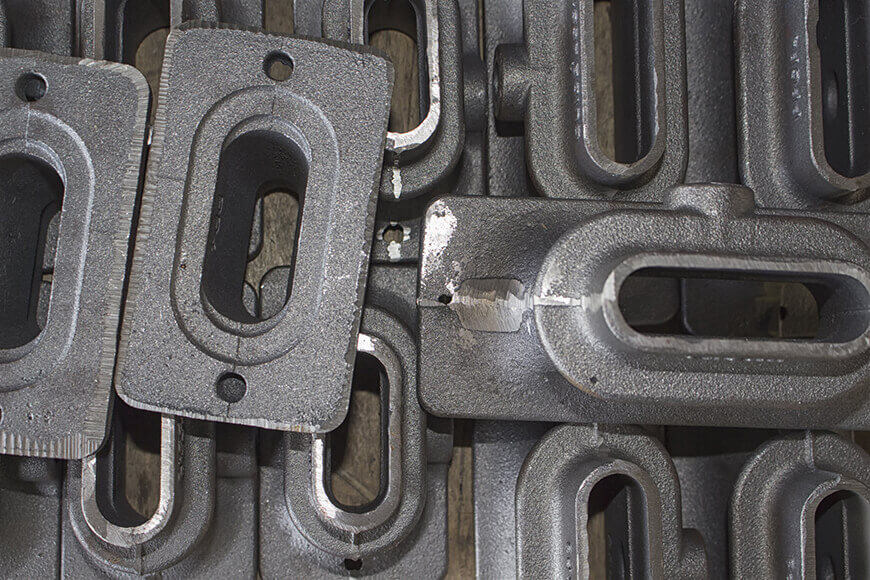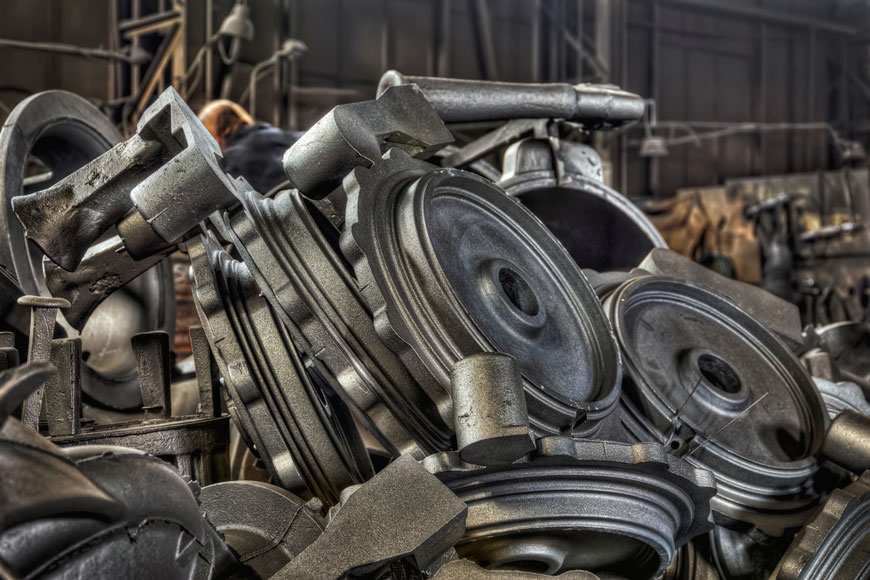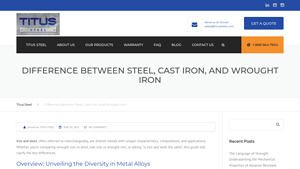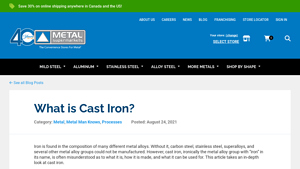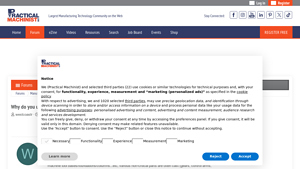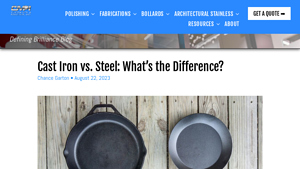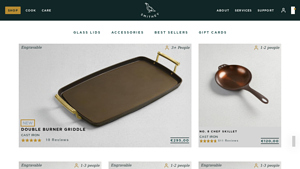Cast Iron Steel Guide: Type, Cost, Top List…
Introduction: Navigating the Global Market for cast iron steel
In today’s competitive landscape, sourcing the right cast iron steel can pose significant challenges for international B2B buyers. With varying carbon content and mechanical properties, understanding the nuances between cast iron and cast steel is crucial for making informed decisions that impact product performance and longevity. This comprehensive guide delves into the different types of cast iron steel, their applications across various industries, and the essential criteria for vetting suppliers.
Moreover, we will explore cost considerations, quality assurance practices, and regional market trends that are particularly relevant for buyers in Africa, South America, the Middle East, and Europe, including key markets like Germany and Brazil. By equipping decision-makers with actionable insights and practical knowledge, this guide aims to streamline the procurement process, ensuring that businesses can confidently select the most suitable materials for their manufacturing needs.
Navigating the complexities of the global cast iron steel market is essential for enhancing operational efficiency and maximizing return on investment. Whether you are looking to optimize production costs or ensure compliance with international standards, our guide provides the tools and information necessary to facilitate effective sourcing and procurement strategies.
Understanding cast iron steel Types and Variations
| Type Name | Key Distinguishing Features | Primary B2B Applications | Brief Pros & Cons for Buyers |
|---|---|---|---|
| Gray Cast Iron | High carbon content (2-4%), excellent castability, good vibration damping | Engine blocks, machine frames, pipes | Pros: Good machinability, cost-effective; Cons: Brittle, lower tensile strength. |
| Ductile Cast Iron | Contains nodular graphite, higher ductility than gray cast iron | Automotive components, heavy machinery | Pros: High impact resistance, better tensile strength; Cons: More expensive than gray cast iron. |
| White Cast Iron | Very hard, high carbon content, low ductility | Wear-resistant applications, liners | Pros: Excellent wear resistance; Cons: Brittle, difficult to machine. |
| Malleable Cast Iron | Heat-treated white iron, improved ductility and toughness | Pipe fittings, agricultural equipment | Pros: Good strength and ductility; Cons: More complex manufacturing process. |
| Cast Steel | Lower carbon content (0.1-0.5%), higher strength and ductility | Structural components, pressure vessels | Pros: Superior impact resistance, versatile; Cons: Higher production costs, more challenging to machine. |
What are the characteristics and suitability of Gray Cast Iron for B2B buyers?
Gray cast iron is characterized by its high carbon content, typically ranging from 2% to 4%, which gives it excellent castability and good vibration damping properties. This material is particularly suitable for applications requiring stability and precision, such as engine blocks and machine frames. For B2B buyers, the advantages of gray cast iron include its cost-effectiveness and ease of machining. However, its brittleness and lower tensile strength compared to other materials may pose challenges in applications subject to high stress or impact.
How does Ductile Cast Iron differ and what are its key applications?
Ductile cast iron, also known as nodular iron, features a unique microstructure with nodular graphite that enhances its ductility and strength. This material is ideal for applications in the automotive and heavy machinery sectors, where high impact resistance and durability are crucial. B2B buyers appreciate ductile cast iron for its superior mechanical properties, though it typically comes at a higher price point than gray cast iron. The increased cost is often justified by the material’s longevity and performance in demanding environments.
What makes White Cast Iron suitable for wear-resistant applications?
White cast iron is distinguished by its high hardness and low ductility, resulting from its high carbon content. This material is primarily used in wear-resistant applications, such as liners for mining equipment and other machinery exposed to abrasive conditions. While its exceptional wear resistance is a significant advantage for B2B buyers, the brittleness and difficulty in machining can limit its use in more complex applications. Buyers must weigh the benefits of durability against the challenges of processing and application suitability.
Why choose Malleable Cast Iron for specific industrial needs?
Malleable cast iron is produced through the heat treatment of white cast iron, resulting in improved ductility and toughness. This material is commonly used in pipe fittings and agricultural equipment, where a combination of strength and flexibility is necessary. For B2B buyers, malleable cast iron presents a balanced option, offering good mechanical properties while being easier to work with than its white cast counterpart. However, its more complex manufacturing process can lead to higher costs, necessitating careful consideration of application requirements.
What are the advantages of Cast Steel in industrial applications?
Cast steel, with its lower carbon content (0.1-0.5%), provides a unique blend of strength and ductility, making it suitable for a wide range of structural components and pressure vessels. B2B buyers favor cast steel for its superior impact resistance and versatility in various applications. While it offers significant performance benefits, the higher production costs and challenges in machining compared to cast iron can be a drawback. Buyers should evaluate the specific requirements of their projects to determine if the benefits of cast steel justify the investment.
Key Industrial Applications of cast iron steel
| Industry/Sector | Specific Application of cast iron steel | Value/Benefit for the Business | Key Sourcing Considerations for this Application |
|---|---|---|---|
| Automotive | Engine blocks and cylinder heads | High durability and excellent vibration damping properties | Need for precision manufacturing and strict quality control |
| Construction | Structural components and architectural elements | Cost-effective production with complex designs | Sourcing from reputable foundries with ISO certifications |
| Manufacturing | Machine beds and housings | Enhanced stability and reduced wear on moving parts | Importance of consistent material properties and machinability |
| Energy | Turbine housings and valve bodies | Resistance to high pressure and temperature | Consideration for material certifications and performance data |
| Agriculture | Plow shares and agricultural machinery parts | High wear resistance and longevity | Availability of custom castings to meet specific machinery designs |
How is cast iron steel utilized in the automotive industry?
In the automotive sector, cast iron steel is predominantly used for manufacturing engine blocks and cylinder heads. Its inherent properties, such as high durability and excellent vibration damping, allow for robust performance under high-stress conditions. Buyers in this industry must prioritize precision manufacturing and strict quality control to ensure that components meet automotive standards. Sourcing from suppliers that specialize in automotive-grade castings and have a proven track record is essential to avoid costly defects and ensure vehicle reliability.
What role does cast iron steel play in construction applications?
Cast iron steel is a favored material in construction for creating structural components and architectural elements, such as columns, beams, and intricate designs. The material’s ability to be cast into complex shapes makes it cost-effective for large-scale projects. International buyers should focus on sourcing from reputable foundries that hold ISO certifications to ensure adherence to safety and quality standards. Additionally, understanding local regulations regarding material specifications is crucial for compliance and project success.
How is cast iron steel critical in manufacturing machinery?
In manufacturing, cast iron steel is widely used for machine beds and housings due to its enhanced stability and capacity to absorb vibrations. This property contributes to the longevity of machinery and reduces wear on moving parts, leading to lower maintenance costs. Buyers should consider suppliers who can provide consistent material properties and excellent machinability to ensure that the final products meet precise tolerances and performance requirements.
Why is cast iron steel important in the energy sector?
The energy sector relies on cast iron steel for turbine housings and valve bodies, where resistance to high pressure and temperature is paramount. The durability of cast iron in these applications helps prevent failures that could lead to significant operational downtime. When sourcing materials for this industry, buyers should consider the need for material certifications and performance data to ensure that the castings can withstand the demanding conditions typical in energy production environments.
How does cast iron steel benefit agricultural machinery?
In agriculture, cast iron steel is commonly used for plow shares and other machinery parts, offering high wear resistance and longevity, which are essential for equipment that operates in harsh conditions. Buyers in this sector should seek out suppliers capable of providing custom castings tailored to specific machinery designs, ensuring compatibility and performance. Additionally, understanding the local agricultural practices and soil conditions can guide sourcing decisions to optimize equipment effectiveness.
3 Common User Pain Points for ‘cast iron steel’ & Their Solutions
Scenario 1: Difficulty in Sourcing High-Quality Cast Iron Steel Components
The Problem: Many B2B buyers encounter challenges when trying to source high-quality cast iron steel components. This issue often arises from the variability in quality standards across different suppliers, especially when dealing with international vendors. Buyers may receive materials that do not meet their specifications, leading to production delays, increased costs, and potential damage to their reputation in the market. In regions such as Africa and South America, where local supply chains may not be well-established, the risk of sourcing subpar materials is particularly pronounced.
The Solution: To mitigate these risks, it’s essential for buyers to conduct thorough supplier evaluations. Start by requesting certifications that demonstrate compliance with international quality standards, such as ISO 9001. Establishing a clear set of specifications before engaging suppliers can also help ensure that the materials meet your requirements. Utilize third-party inspection services to verify the quality of the cast iron steel before finalizing the purchase. Additionally, consider establishing long-term relationships with reliable suppliers who can provide consistent quality, thus reducing the likelihood of sourcing issues in the future.
Scenario 2: Understanding the Different Grades and Their Applications
The Problem: B2B buyers often struggle with understanding the various grades of cast iron steel and their respective applications. This confusion can lead to the selection of inappropriate materials for specific projects, ultimately affecting performance and durability. For example, a buyer might choose a grade with insufficient impact resistance for a high-stress application, resulting in product failure and costly recalls. This scenario is particularly critical in industries such as automotive and manufacturing, where precision and material properties are paramount.
The Solution: To address this issue, it is crucial to invest time in educating yourself and your team about the different grades of cast iron steel. Engage with material experts and suppliers who can provide detailed information on the mechanical properties of each grade, including tensile strength, ductility, and machinability. Create a comprehensive guide that outlines which grades are best suited for various applications, and incorporate this into your procurement process. Moreover, consider implementing a review system where past projects are analyzed to refine material selection for future endeavors, ensuring that the most appropriate grades are used consistently.
Scenario 3: Challenges with Machinability and Production Costs
The Problem: Another common pain point for B2B buyers is the machinability of cast iron steel, which can lead to higher production costs. Machining cast iron is generally easier than steel; however, certain grades of cast iron can still pose challenges, particularly when dealing with hard or brittle variants. Buyers may find that their machining tools wear out faster when working with these materials, leading to increased downtime and higher overall operational costs. In competitive markets, these inefficiencies can significantly impact profitability.
The Solution: To enhance machinability and reduce production costs, buyers should focus on selecting the right grade of cast iron steel that balances strength and ease of machining. Utilize materials with optimized graphite structures that facilitate easier cutting and grinding. Investing in high-quality, specialized cutting tools can also minimize wear and enhance performance during machining. Additionally, establishing a proactive maintenance schedule for machinery can help reduce downtime and improve efficiency. Collaborating with machining experts to develop best practices for handling specific grades will further streamline operations and lower costs in the long run.
Strategic Material Selection Guide for cast iron steel
What Are the Key Properties of Common Cast Iron Steel Materials?
When selecting materials for cast iron steel applications, understanding the properties and performance characteristics of various types is crucial for B2B buyers. Here, we analyze four common materials: Grey Cast Iron, Ductile Cast Iron, White Cast Iron, and Cast Steel. Each material has unique attributes that make it suitable for specific applications.
What Are the Key Properties of Grey Cast Iron?
Grey Cast Iron is one of the most widely used types of cast iron due to its excellent castability and machinability. It typically contains 2-4% carbon and 1-3% silicon, which enhances its casting performance. The graphite flakes in grey cast iron provide good vibration damping, making it ideal for applications like engine blocks and machine bases.
Pros: It is cost-effective and has good compressive strength, making it durable for heavy-duty applications. Its machinability allows for easy shaping and finishing.
Cons: Grey cast iron is brittle and has low impact resistance, which can lead to fractures under sudden stress.
Impact on Application: Its compatibility with various media makes it suitable for automotive and industrial machinery, but caution is needed in applications involving high-impact forces.
Considerations for International Buyers: Compliance with international standards such as ASTM A48 or DIN EN 1561 is essential. Buyers in regions like Europe and South America should also consider local sourcing options to reduce lead times.
How Does Ductile Cast Iron Compare?
Ductile Cast Iron, also known as Nodular Cast Iron, contains small amounts of alloying elements like magnesium, which improve its ductility and tensile strength. This material is particularly advantageous in applications requiring higher resilience to impact.
Pros: It offers excellent strength and toughness, making it suitable for high-stress applications like automotive components and heavy machinery.
Cons: The manufacturing process is more complex and costly compared to grey cast iron, which may affect overall project budgets.
Impact on Application: Its ability to withstand dynamic loads makes it ideal for components like crankshafts and gears, where flexibility is crucial.
Considerations for International Buyers: Ductile cast iron should meet standards like ASTM A536. Buyers should also assess local availability and cost implications in regions such as Africa and the Middle East.
What Are the Characteristics of White Cast Iron?
White Cast Iron is characterized by its hard, brittle structure due to the presence of cementite. It is typically used in applications requiring high wear resistance.
Pros: Its hardness makes it suitable for abrasive environments, such as in the manufacturing of wear-resistant surfaces.
Cons: The brittleness limits its application in high-impact scenarios, and it is challenging to machine.
Impact on Application: Ideal for components like liners and grinding media, white cast iron excels in environments where wear is a primary concern.
Considerations for International Buyers: Compliance with standards like ASTM A532 can ensure quality. Buyers must also consider the machining challenges and potential costs associated with this material.
How Does Cast Steel Differ from Cast Iron?
Cast Steel, with a lower carbon content (0.1-0.5%), offers higher tensile strength and ductility compared to cast iron. It is often used in applications where high strength and toughness are critical.
Pros: It exhibits excellent impact resistance and can be heat-treated to enhance properties, making it versatile for various applications.
Cons: Cast steel is more expensive and requires more complex manufacturing processes, which can increase production timelines.
Impact on Application: It is suitable for critical structural components in industries such as construction and aerospace, where performance under stress is paramount.
Considerations for International Buyers: Compliance with standards such as ASTM A216 is essential. Buyers should also be aware of the higher costs and potential supply chain complexities in sourcing cast steel.
Summary Table of Cast Iron Steel Materials
| Material | Typical Use Case for Cast Iron Steel | Key Advantage | Key Disadvantage/Limitation | Relative Cost (Low/Med/High) |
|---|---|---|---|---|
| Grey Cast Iron | Engine blocks, machine bases | Good castability and machinability | Brittle, low impact resistance | Low |
| Ductile Cast Iron | Crankshafts, gears | High strength and toughness | Higher manufacturing complexity | Medium |
| White Cast Iron | Wear-resistant surfaces, liners | Excellent hardness | Brittle, difficult to machine | Medium |
| Cast Steel | Structural components, aerospace parts | High tensile strength and ductility | More expensive, complex processes | High |
This strategic material selection guide provides essential insights for B2B buyers, enabling informed decisions tailored to specific applications and regional considerations.
In-depth Look: Manufacturing Processes and Quality Assurance for cast iron steel
What Are the Main Stages of Manufacturing Cast Iron Steel?
The manufacturing process for cast iron steel involves several critical stages, each designed to ensure the final product meets the required specifications and quality standards. Understanding these stages is essential for B2B buyers who seek reliable and durable cast iron steel products.
How Is Material Prepared for Casting?
The first step in the manufacturing process is material preparation, which typically involves selecting the appropriate iron-carbon alloy. Cast iron generally contains a carbon content of 2-4%, making it crucial to choose the right alloy for specific applications. The iron is then melted in a furnace, often using induction or electric arc methods, to achieve the desired temperature (around 2300°F for iron).
During this stage, additional elements such as silicon and manganese may be added to improve casting performance and mechanical properties. Once the desired alloy composition is achieved, the molten iron is prepared for pouring into molds.
What Techniques Are Used in Forming Cast Iron Steel?
The forming stage involves pouring the molten iron into pre-prepared molds. This process can utilize various techniques, including:
-
Sand Casting: A traditional method where molds are made from sand and clay mixtures. It is cost-effective and suitable for complex shapes.
-
Investment Casting: Also known as lost-wax casting, this method offers high precision and is ideal for smaller, intricate parts.
-
Die Casting: This technique uses high pressure to force molten iron into a mold, resulting in smoother finishes and tighter tolerances.
Once the iron is poured, it begins to cool and solidify within the mold. This step is critical, as the cooling rate can affect the final properties of the cast iron. After sufficient cooling, the molds are removed, and any excess material, such as risers or gates, is trimmed off.
How Is the Finishing Process Conducted for Cast Iron Steel?
The finishing stage involves several operations to refine the cast part. This can include:
-
Machining: Parts may require machining to achieve specific tolerances or surface finishes. Techniques such as CNC milling, turning, and grinding are commonly employed.
-
Surface Treatment: Depending on the application, cast iron parts may undergo processes like shot blasting, painting, or coating to improve corrosion resistance and aesthetics.
-
Heat Treatment: In some cases, heat treatment is applied to enhance mechanical properties, such as strength and ductility.
These finishing processes are vital for ensuring that the final product meets the specifications required for its intended use.
What Quality Assurance Measures Are Commonly Used in Cast Iron Steel Manufacturing?
Quality assurance (QA) is paramount in the manufacturing of cast iron steel. Implementing robust QA measures ensures that products meet international standards and customer expectations.
Which International Standards Apply to Cast Iron Steel Manufacturing?
International standards such as ISO 9001 set the framework for quality management systems across industries, including metal casting. Compliance with ISO standards helps manufacturers maintain consistency in their processes and improve customer satisfaction.
In addition to ISO, industry-specific certifications may be necessary, such as:
-
CE Marking: Required for products sold in the European Economic Area, indicating compliance with safety and environmental standards.
-
API Certification: Relevant for products intended for the oil and gas industry, ensuring they meet rigorous quality and safety criteria.
For B2B buyers, ensuring that suppliers hold these certifications can provide confidence in the quality of the products they are sourcing.
What Are the Key Quality Control Checkpoints in Manufacturing?
Quality control (QC) checkpoints are essential at various stages of the manufacturing process to ensure that any defects are identified and rectified promptly. Common QC checkpoints include:
-
Incoming Quality Control (IQC): This involves inspecting raw materials upon arrival at the manufacturing facility to ensure they meet specified requirements.
-
In-Process Quality Control (IPQC): During manufacturing, regular inspections and tests are conducted to monitor the quality of the process and the products being produced.
-
Final Quality Control (FQC): After manufacturing, finished products are subjected to rigorous testing and inspection to confirm they meet all quality standards before shipment.
Implementing these checkpoints helps reduce defects and ensures that only high-quality products reach the market.
What Testing Methods Are Used to Ensure Quality in Cast Iron Steel?
To verify the quality of cast iron steel, manufacturers employ various testing methods, including:
-
Non-Destructive Testing (NDT): Techniques such as ultrasonic testing, magnetic particle inspection, and dye penetrant testing help identify internal and surface defects without damaging the product.
-
Mechanical Testing: This includes tensile, compressive, and hardness tests to evaluate the material’s mechanical properties and ensure they meet specified requirements.
-
Chemical Composition Analysis: Spectrometry is often used to analyze the alloy’s chemical composition, ensuring it adheres to the required standards.
These testing methods are crucial for providing assurance to B2B buyers that the products they purchase will perform as expected.
How Can B2B Buyers Verify Supplier Quality Control?
For international B2B buyers, verifying a supplier’s quality control measures is essential for ensuring product reliability. Here are some effective strategies:
-
Supplier Audits: Conducting on-site audits of potential suppliers can provide insight into their manufacturing processes, QC practices, and adherence to international standards.
-
Requesting Quality Reports: Suppliers should be able to provide documented evidence of their quality control processes, including inspection reports and test results.
-
Engaging Third-Party Inspectors: Hiring independent third-party inspectors to evaluate suppliers can add an extra layer of assurance regarding quality and compliance with industry standards.
What QC Considerations Are Unique for International B2B Buyers?
International B2B buyers should be aware of specific nuances in quality control when sourcing cast iron steel products. For instance:
-
Cultural Differences in Quality Expectations: Different regions may have varying standards and expectations regarding product quality. It is essential to communicate clearly with suppliers about these expectations.
-
Regulatory Compliance: Understanding the local regulations and standards in the buyer’s region is crucial. For example, products sold in the EU must comply with CE marking requirements, while products in the Middle East may have different regulations.
By considering these factors, B2B buyers can make informed decisions and establish successful partnerships with suppliers of cast iron steel.
Practical Sourcing Guide: A Step-by-Step Checklist for ‘cast iron steel’
To assist B2B buyers in procuring cast iron steel, this guide provides a structured checklist that outlines key steps in the sourcing process. Following these steps will help ensure that buyers make informed decisions, minimize risks, and achieve optimal outcomes.
Step 1: Define Your Technical Specifications
Before initiating the sourcing process, clearly outline the technical specifications of the cast iron steel you require. This includes defining the desired carbon content, mechanical properties, and any specific industry standards that must be met. Precise specifications help in narrowing down potential suppliers and ensure that the materials sourced meet your application’s needs.
- Consider factors such as tensile strength, hardness, and ductility.
- Identify any industry certifications that may be relevant to your product.
Step 2: Research Potential Suppliers
Conduct thorough research to identify potential suppliers of cast iron steel. Look for manufacturers that specialize in the production of cast iron and steel alloys, and assess their reputation in the market. Reliable suppliers should have a track record of quality and consistency.
- Utilize platforms like industry directories, trade shows, and online reviews to gather information.
- Pay attention to suppliers that have experience in serving your specific industry or region.
Step 3: Verify Supplier Certifications
It is essential to ensure that your chosen suppliers hold relevant certifications that demonstrate compliance with industry standards. Certifications such as ISO 9001 or material-specific certifications indicate a commitment to quality management and production processes.
- Request copies of certifications and verify their validity.
- Look for suppliers that engage in regular audits to maintain their certification status.
Step 4: Request Samples for Evaluation
Before finalizing your order, request samples of the cast iron steel from potential suppliers. Evaluating samples allows you to assess the material’s quality, finish, and suitability for your application.
- Conduct tests for mechanical properties, such as tensile strength and impact resistance.
- Examine the samples for any visible defects or inconsistencies.
Step 5: Evaluate Pricing and Terms
Compare pricing structures and payment terms from different suppliers to find the best value. Keep in mind that the cheapest option may not always provide the best quality or service.
- Inquire about bulk purchase discounts and shipping costs.
- Consider the total cost of ownership, including potential long-term benefits of higher quality materials.
Step 6: Assess Logistics and Delivery Capabilities
Understanding a supplier’s logistics capabilities is crucial for timely delivery. Evaluate their shipping methods, lead times, and ability to meet your delivery schedules.
- Confirm if the supplier can handle customs and export regulations, especially for international transactions.
- Establish clear communication channels for updates on order status.
Step 7: Establish a Quality Assurance Process
Once you select a supplier, implement a quality assurance process to monitor the quality of the cast iron steel received. This step is vital to ensure that the materials consistently meet your specifications.
- Define acceptance criteria for quality checks upon delivery.
- Develop a feedback loop with the supplier to address any discrepancies promptly.
By following this checklist, B2B buyers can navigate the complexities of sourcing cast iron steel effectively, ensuring they select the right suppliers and materials for their manufacturing needs.
Comprehensive Cost and Pricing Analysis for cast iron steel Sourcing
What are the Key Cost Components in Sourcing Cast Iron Steel?
When sourcing cast iron steel, a thorough understanding of the cost structure is crucial for international buyers. The primary cost components include:
-
Materials: The cost of raw materials significantly influences pricing. Cast iron typically contains over 2% carbon, while cast steel has a lower carbon content. The prices of scrap iron and steel can fluctuate based on global market demand, impacting the overall cost.
-
Labor: Labor costs vary by region and can be influenced by the skill level required for casting, machining, and finishing processes. Countries with higher labor costs might see increased prices in cast iron steel, while lower-cost labor markets can provide more competitive pricing.
-
Manufacturing Overhead: This includes indirect costs such as utilities, rent, and equipment maintenance. Efficient manufacturing practices can lower these costs, which may be reflected in the final pricing.
-
Tooling: Tooling costs are particularly relevant when custom molds or specific machinery are required. High-quality tooling can enhance production efficiency but may increase initial costs.
-
Quality Control (QC): Ensuring that cast iron steel meets specific standards and certifications adds to the overall cost. Rigorous QC processes are essential for maintaining product reliability, especially for industries such as automotive and aerospace.
-
Logistics: Shipping costs can vary significantly based on distance, weight, and the mode of transport. Incoterms (International Commercial Terms) also play a critical role in determining who bears the shipping costs, affecting the final price.
-
Margin: Suppliers typically add a profit margin to cover their costs and ensure sustainability. This margin can vary based on the supplier’s market positioning and the competitiveness of their offerings.
How Do Price Influencers Impact Cast Iron Steel Costs?
Several factors can influence the pricing of cast iron steel:
-
Volume/MOQ (Minimum Order Quantity): Bulk orders often lead to discounts due to economies of scale. Buyers should negotiate favorable terms based on their purchasing volume.
-
Specifications and Customization: Custom specifications or unique alloys can lead to increased costs. Buyers should be clear about their requirements to avoid unexpected price hikes.
-
Quality and Certifications: Higher quality materials and compliance with international standards (such as ISO certifications) can increase costs but are crucial for applications where reliability is paramount.
-
Supplier Factors: The supplier’s reputation, production capacity, and location can influence pricing. Established suppliers may charge a premium for their reliability and service.
-
Incoterms: Understanding Incoterms is essential for international transactions as they determine the responsibilities of buyers and sellers regarding shipping and logistics. This can affect overall costs significantly.
What Buyer Tips Can Enhance Cost-Efficiency in Sourcing?
International buyers should consider the following strategies to enhance cost-efficiency when sourcing cast iron steel:
-
Negotiate Terms: Engage in open discussions with suppliers about pricing, payment terms, and delivery schedules. Building strong relationships can often lead to better deals.
-
Evaluate Total Cost of Ownership (TCO): Look beyond the initial purchase price and consider factors such as maintenance, durability, and lifecycle costs. Cast iron’s superior vibration damping and compressive strength may lead to lower long-term costs in certain applications.
-
Understand Pricing Nuances for International Buyers: Buyers from Africa, South America, the Middle East, and Europe should be aware of regional pricing differences and potential tariffs or duties that may apply when importing materials.
-
Research Market Trends: Staying informed about market trends, such as fluctuations in raw material prices or shifts in demand, can help buyers make informed purchasing decisions.
Disclaimer on Indicative Prices
It is important to note that the prices of cast iron steel can vary widely based on the aforementioned factors. Buyers should conduct thorough market research and consult multiple suppliers to obtain accurate and up-to-date pricing information tailored to their specific needs.
Alternatives Analysis: Comparing cast iron steel With Other Solutions
Exploring Alternative Solutions to Cast Iron Steel
When considering manufacturing materials, it’s essential to evaluate various options to identify the best fit for specific applications. While cast iron steel is widely recognized for its durability and machinability, alternatives such as aluminum alloys and composite materials offer distinct benefits that may align better with particular project requirements. This section provides a comparative analysis of cast iron steel against these viable alternatives.
| Comparison Aspect | Cast Iron Steel | Aluminum Alloys | Composite Materials |
|---|---|---|---|
| Performance | Excellent compressive strength; good vibration damping. | Lightweight; good corrosion resistance; moderate strength. | High strength-to-weight ratio; tailored properties. |
| Cost | Generally cost-effective for large-scale production. | Typically higher initial material cost; cost-effective over time due to longevity. | High initial cost; variable based on material composition. |
| Ease of Implementation | Requires specific foundry processes; complex molds may be needed. | Easier to work with; can be machined and formed into complex shapes easily. | Requires specialized manufacturing techniques; may necessitate additional tooling. |
| Maintenance | Durable but may require periodic inspections for wear. | Generally low maintenance; resistant to rust and corrosion. | Maintenance depends on the specific matrix; may require inspections for delamination. |
| Best Use Case | Ideal for heavy machinery, engine components, and architectural applications. | Best for automotive, aerospace, and consumer electronics. | Suitable for high-performance applications like sports equipment, aerospace, and automotive components. |
In-Depth Analysis of Alternative Solutions
How do Aluminum Alloys Compare to Cast Iron Steel?
Aluminum alloys are an attractive alternative to cast iron steel, particularly in industries where weight savings are crucial. Their lightweight nature allows for reduced energy consumption in transportation and enhanced performance in applications like automotive and aerospace. However, while aluminum has a good strength-to-weight ratio, it typically does not match the compressive strength of cast iron. Moreover, aluminum alloys are generally more resistant to corrosion, which can lead to lower maintenance costs in the long run. However, the initial cost can be higher, making it essential to evaluate the long-term benefits against the upfront investment.
What Advantages Do Composite Materials Offer Over Cast Iron Steel?
Composite materials provide a unique combination of properties tailored to meet specific application needs. They are known for their high strength-to-weight ratio and can be engineered to exhibit properties such as enhanced thermal and electrical resistance. This makes composites particularly advantageous in industries like aerospace and automotive, where performance is paramount. However, the initial manufacturing costs can be significantly higher than that of cast iron steel, and the production processes often require specialized techniques and tools. Additionally, maintenance requirements can vary based on the material matrix used, necessitating careful consideration in the design phase.
How Should B2B Buyers Choose the Right Solution?
Selecting the right material depends heavily on the specific application and operational requirements. B2B buyers should consider factors such as performance needs, budget constraints, and the intended lifespan of the product. While cast iron steel excels in heavy-duty applications, alternatives like aluminum alloys and composites may provide better options for projects emphasizing weight reduction or specific mechanical properties. Conducting a thorough analysis of the advantages and limitations of each material will enable buyers to make informed decisions that align with their long-term operational goals.
Essential Technical Properties and Trade Terminology for cast iron steel
What Are the Key Technical Properties of Cast Iron Steel?
Understanding the technical properties of cast iron steel is crucial for B2B buyers, as these characteristics directly impact product performance, application suitability, and overall cost-effectiveness.
1. Material Grade
Material grades refer to the classification of cast iron and steel based on their chemical composition and mechanical properties. Common grades for cast iron include Grey Iron (ASTM A48) and Ductile Iron (ASTM A536), while for cast steel, grades like AISI 1045 and AISI 4140 are prevalent. Choosing the right grade is essential for ensuring that the material meets specific strength, ductility, and corrosion resistance requirements for the intended application, minimizing the risk of failure and enhancing product longevity.
2. Carbon Content
The carbon content significantly influences the properties of cast iron and steel. Cast iron typically contains over 2% carbon, while cast steel contains between 0.1% and 0.5%. Higher carbon content in cast iron provides excellent castability and compressive strength but can lead to brittleness. For B2B buyers, understanding the implications of carbon content is vital for selecting materials that balance strength and ductility in applications ranging from automotive components to construction materials.
3. Machinability
Machinability refers to how easily a material can be machined to achieve desired tolerances and finishes. Cast iron generally offers better machinability than cast steel due to its graphite microstructure, which allows for easier cutting and grinding. This property is crucial for manufacturers aiming to reduce production costs and time. For B2B buyers, assessing machinability helps in selecting materials that align with their production capabilities and cost constraints.
4. Tensile Strength
Tensile strength measures a material’s resistance to being pulled apart and is critical for applications where load-bearing capabilities are essential. Cast iron typically exhibits high compressive strength but lower tensile strength compared to cast steel. Understanding tensile strength is important for B2B buyers to ensure that the selected materials will perform adequately under operational stresses without risking structural failure.
5. Impact Resistance
Impact resistance is the ability of a material to withstand sudden forces without fracturing. Cast steel excels in this area, making it suitable for applications that experience dynamic loading conditions, such as in automotive and industrial machinery. For B2B buyers, evaluating impact resistance is crucial in industries where safety and reliability are paramount.
What Are Common Trade Terms Associated with Cast Iron Steel?
Familiarity with industry terminology is essential for effective communication and negotiation in the B2B marketplace. Here are some key terms to know:
1. OEM (Original Equipment Manufacturer)
An OEM is a company that produces parts or equipment that may be marketed by another manufacturer. In the context of cast iron and steel, OEMs often require specific grades and specifications to meet the performance needs of their products. Understanding OEM requirements helps B2B buyers align their sourcing strategies with industry standards.
2. MOQ (Minimum Order Quantity)
MOQ refers to the smallest number of units a supplier is willing to sell. This term is critical for B2B buyers as it impacts inventory management and cash flow. Knowing the MOQ can help buyers negotiate better terms and understand the scale of their purchases.
3. RFQ (Request for Quotation)
An RFQ is a formal process where buyers request price quotes from suppliers for specific products or services. This term is essential for B2B procurement, as it helps streamline the purchasing process and ensures that buyers receive competitive pricing.
4. Incoterms (International Commercial Terms)
Incoterms are internationally recognized rules that define the responsibilities of buyers and sellers in the shipping process. These terms clarify who is responsible for shipping costs, insurance, and risk during transportation. Understanding Incoterms is vital for B2B buyers engaged in international trade, as it helps mitigate risks and clarify obligations.
5. Lead Time
Lead time is the time taken from placing an order to its delivery. In the context of cast iron and steel production, lead times can vary based on material availability and production schedules. For B2B buyers, understanding lead times is crucial for effective project planning and inventory management.
By grasping these technical properties and trade terms, B2B buyers can make informed decisions that optimize their procurement strategies and enhance product performance.
Navigating Market Dynamics and Sourcing Trends in the cast iron steel Sector
What Are the Current Market Dynamics in the Cast Iron Steel Sector?
The global cast iron and steel market is experiencing significant transformations driven by several key factors. An increased demand for high-performance materials across industries such as automotive, construction, and manufacturing is propelling growth. In regions like Africa and South America, urbanization and infrastructure development are leading to a surge in demand for cast iron products. Meanwhile, European countries, particularly Germany, are focusing on innovation and sustainability, pushing for advanced materials that combine strength with efficiency.
Emerging B2B technologies are also shaping sourcing trends. The rise of digital platforms is facilitating direct connections between manufacturers and buyers, allowing for more competitive pricing and streamlined procurement processes. Additionally, advancements in 3D printing and additive manufacturing are enabling customized solutions and reducing lead times, thus enhancing operational efficiency. International buyers must stay informed about these trends to leverage opportunities in a rapidly evolving market landscape.
How Is Sustainability Influencing Sourcing in the Cast Iron Steel Industry?
Sustainability has become a crucial factor in sourcing decisions within the cast iron steel sector. The environmental impact of metal production is significant, with traditional methods contributing to carbon emissions and resource depletion. As a result, international B2B buyers are increasingly prioritizing suppliers that adhere to ethical sourcing practices and demonstrate a commitment to sustainability.
Investing in ‘green’ certifications and materials is essential for companies aiming to enhance their reputation and meet regulatory standards. Certifications such as ISO 14001 for environmental management and the use of recycled materials in production processes can distinguish suppliers in the eyes of conscientious buyers. Furthermore, companies that adopt sustainable practices often see improved operational efficiencies and cost savings, making them more attractive partners in the long run.
What Is the Historical Context of the Cast Iron Steel Sector?
The history of cast iron and steel production can be traced back to ancient civilizations, where early forms of cast iron were used for weapons and tools. The Industrial Revolution in the 18th century marked a significant turning point, as advancements in smelting techniques and the introduction of the blast furnace allowed for mass production. This era not only expanded the applications of cast iron but also paved the way for the development of cast steel.
Over the decades, innovations in metallurgy and casting techniques have continuously improved the properties of these materials, enhancing their strength and durability. Today, cast iron and steel remain vital components in various industries, reflecting a legacy of adaptability and ongoing evolution that is crucial for B2B buyers navigating the market. Understanding this historical context can provide valuable insights into current trends and future opportunities within the sector.
Frequently Asked Questions (FAQs) for B2B Buyers of cast iron steel
-
How do I choose between cast iron and cast steel for my project?
Choosing between cast iron and cast steel depends on your project’s specific requirements. Cast iron is often favored for its excellent castability, vibration damping, and compressive strength, making it ideal for applications like engine blocks and machine beds. In contrast, cast steel offers superior impact resistance and ductility, making it suitable for components subjected to sudden stresses. Consider factors such as mechanical properties, machining requirements, and budget constraints to make an informed decision. -
What are the key specifications to consider when sourcing cast iron steel?
When sourcing cast iron steel, focus on specifications such as carbon content, tensile strength, ductility, and hardness. Additionally, assess the type of cast iron (e.g., gray, ductile) and its intended application. Verify the supplier’s certifications, quality assurance processes, and compliance with international standards. Understanding these specifications will help you select the right material for your manufacturing needs. -
What is the minimum order quantity (MOQ) for cast iron steel?
Minimum order quantities for cast iron steel can vary significantly among suppliers, typically ranging from a few tons to several dozen tons. Factors influencing MOQ include production capabilities, shipping logistics, and the complexity of the order. It’s advisable to discuss your specific needs with potential suppliers to negotiate an MOQ that aligns with your purchasing strategy and budget. -
What payment terms should I expect when purchasing cast iron steel internationally?
Payment terms for international purchases of cast iron steel typically include options like advance payment, letters of credit, or payment upon delivery. Common terms might be 30% upfront and 70% before shipment. Always clarify payment structures with your supplier to avoid misunderstandings, and consider using secure payment methods to mitigate risks associated with international transactions. -
How can I ensure quality when sourcing cast iron steel from overseas suppliers?
To ensure quality when sourcing cast iron steel internationally, conduct thorough supplier vetting. Request certifications, such as ISO 9001, and ask for product samples or test reports. Consider visiting the supplier’s facility or using third-party inspection services to verify quality standards. Establish clear quality assurance protocols in your contract to hold suppliers accountable. -
What logistics considerations should I keep in mind when importing cast iron steel?
When importing cast iron steel, consider logistics factors such as shipping methods, customs clearance, and import tariffs. Choose a reliable freight forwarder experienced in handling heavy materials to ensure timely delivery. Be aware of any regulations or documentation required for your specific region, and factor in potential delays or additional costs to avoid disruption in your supply chain. -
Can I customize my cast iron steel order?
Yes, many suppliers offer customization options for cast iron steel orders, including specific dimensions, grades, and surface finishes. Discuss your requirements with potential suppliers to determine their capabilities. Keep in mind that customization may affect lead times and costs, so it’s essential to plan accordingly and communicate your needs clearly to avoid misalignment. -
What are the typical applications for cast iron steel in various industries?
Cast iron steel is widely used across various industries due to its unique properties. In automotive manufacturing, it’s often used for engine blocks and cylinder heads due to its excellent damping characteristics. In construction, cast iron is favored for architectural elements and heavy machinery parts. Additionally, industries like aerospace, railways, and energy utilize cast iron components for their strength and durability, making it a versatile material in B2B applications.
Important Disclaimer & Terms of Use
⚠️ Important Disclaimer
The information provided in this guide, including content regarding manufacturers, technical specifications, and market analysis, is for informational and educational purposes only. It does not constitute professional procurement advice, financial advice, or legal advice.
While we have made every effort to ensure the accuracy and timeliness of the information, we are not responsible for any errors, omissions, or outdated information. Market conditions, company details, and technical standards are subject to change.
B2B buyers must conduct their own independent and thorough due diligence before making any purchasing decisions. This includes contacting suppliers directly, verifying certifications, requesting samples, and seeking professional consultation. The risk of relying on any information in this guide is borne solely by the reader.
Top 7 Cast Iron Steel Manufacturers & Suppliers List
1. Titus Steel – Key Products in Wear-Resistant Alloys
Domain: titussteel.com
Registered: 2000 (25 years)
Introduction: Titus Steel offers a variety of metal alloys including Wear Impact Steel, Endura, Creusabro 8000 Steel, Dynamic Armor Plates, and specialized wear-resistant steels such as TITUS Manganese and ENDURA. Key product details include: 1. **Wear Impact Steel** – Designed for high-stress applications, resistant to abrasion and impact. 2. **Endura** – A high-alloy, work-hardening steel that becomes harder …
2. Metal Supermarkets – Cast Iron Alloys
Domain: metalsupermarkets.com
Registered: 1996 (29 years)
Introduction: Cast iron is a family of metal alloys primarily composed of iron, with over 2% carbon. It includes four major subtypes: Ductile cast iron (nodules of graphite, more ductile), Gray cast iron (flakes of graphite, improved machinability), White cast iron (high iron carbides, very brittle), and Malleable cast iron (heat-treated white cast iron). Key properties include excellent compressive strength, h…
3. Practical Machinist – Cast Iron Advantages
Domain: practicalmachinist.com
Registered: 2000 (25 years)
Introduction: Cast iron is often 50% more expensive than mild steel (1018) and is used for various non-critical parts such as gears and control arms. Key benefits of cast iron include better machinability due to its hardness, longer wear life, resistance to galling, and no need for pre/post machining heat treatment in many applications. In mass production, castings are significantly cheaper than machined parts …
4. Eng-Tips – Distinguishing Cast Iron from Cast Steel
Domain: eng-tips.com
Registered: 1997 (28 years)
Introduction: To distinguish between cast iron and cast steel, several methods can be employed: 1. **Sound Test**: Striking the casting with a hammer; cast steel will ring while gray cast iron will not. 2. **Spark Test**: Observing the sparks produced when grinding; different materials produce different spark patterns. 3. **Chisel Test**: Using a sharp chisel to remove a thin chip; cast iron will not form a chi…
5. Cmpionline – Cast Iron vs. Steel
Domain: cmpionline.com
Registered: 2000 (25 years)
Introduction: Cast Iron vs. Steel: Key Differences
1. **Composition**:
– Cast Iron: Primarily iron, carbon, and silicon.
– Steel: Iron and carbon with varying amounts of chromium, nickel, and manganese.
2. **Strength and Durability**:
– Cast Iron: Durable but brittle, best for compression strength applications (e.g., engine blocks, pipes).
– Steel: Stronger and tougher, suitable for constructio…
6. iForge Iron – Cast Steel Tools
Domain: iforgeiron.com
Registered: 2001 (24 years)
Introduction: 1. Cast Steel: Tools stamped “CAST STEEL” are made from steel cast into ingots and then forged or rolled. This process predates the Bessemer process. 2. Forgings vs. Castings: Forgings have superior impact strength and fatigue properties compared to castings. Grain flow in forgings provides enhanced toughness. 3. Steel Castings: Widespread use of steel castings began after the Bessemer process, wi…
7. Smithey – Engravable Double Burner Griddle
Domain: smithey.com
Registered: 2001 (24 years)
Introduction: [{‘name’: ‘Engravable Double Burner Griddle’, ‘material’: ‘CAST IRON’, ‘price’: 295, ‘rating’: 5.0, ‘reviews’: 19, ‘serving_size’: ‘3+ People’}, {‘name’: ‘No. 8 Chef Skillet’, ‘material’: ‘CAST IRON’, ‘price’: 120, ‘rating’: 4.8, ‘reviews’: 511, ‘serving_size’: ‘1-3 people’}, {‘name’: ‘Engravable No. 10 Chef Skillet’, ‘material’: ‘CAST IRON’, ‘price’: 160, ‘rating’: 4.9, ‘reviews’: 487, ‘serving_s…
Strategic Sourcing Conclusion and Outlook for cast iron steel
What Are the Key Insights for B2B Buyers in Cast Iron Steel Sourcing?
In the competitive landscape of cast iron steel sourcing, understanding the fundamental differences between cast iron and cast steel is essential for making informed procurement decisions. Cast iron, with its superior castability and vibration-damping properties, is ideal for applications requiring durability and precision. In contrast, cast steel offers exceptional impact resistance, making it suitable for high-stress environments. Buyers should evaluate their specific needs to leverage these materials effectively.
Strategic sourcing plays a pivotal role in ensuring quality and cost-effectiveness. Engaging reliable suppliers who understand the nuances of these materials can lead to enhanced product performance and reduced overall costs. As global markets evolve, particularly in regions like Africa, South America, the Middle East, and Europe, staying ahead of trends in material science and supply chain management is crucial.
How Can You Prepare for Future Opportunities in Cast Iron Steel?
Looking ahead, B2B buyers should consider the implications of emerging technologies in manufacturing and sourcing. Embracing innovations such as advanced machining techniques and sustainable practices can provide a competitive edge. By fostering strong partnerships and continuously seeking knowledge, businesses can navigate the complexities of the cast iron steel market with confidence. Now is the time to refine your sourcing strategies to align with future demands and maximize your operational efficiency.
